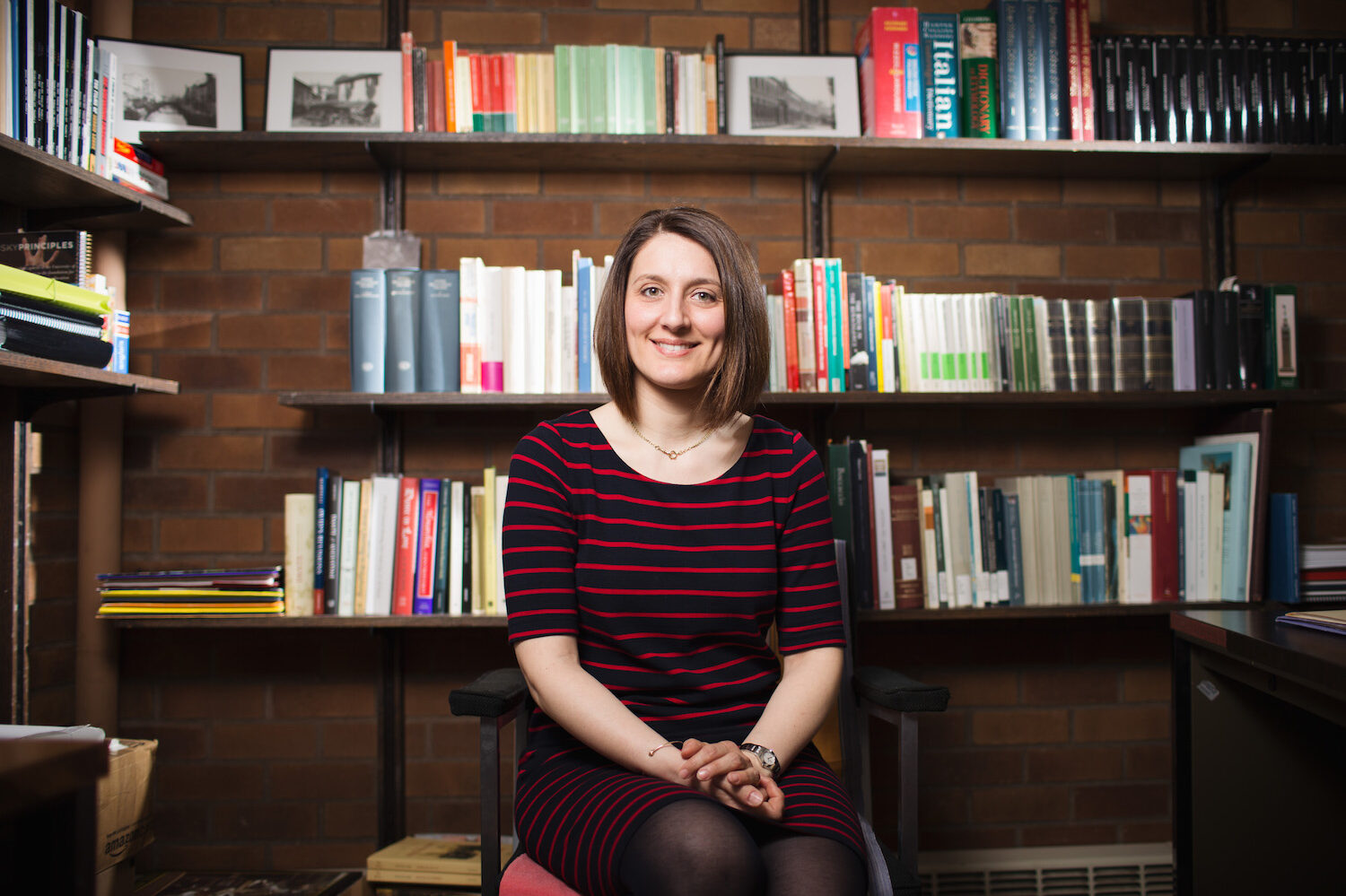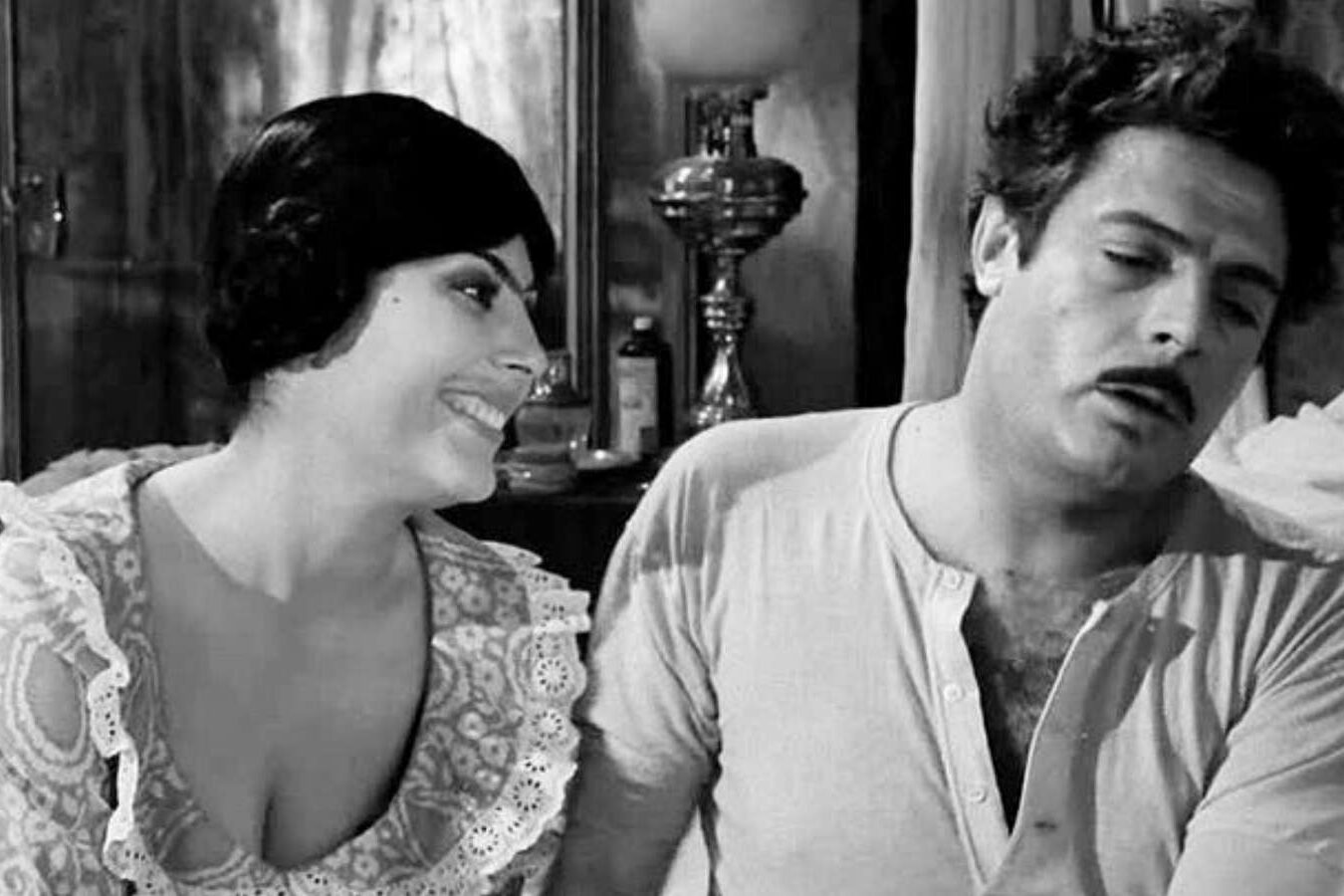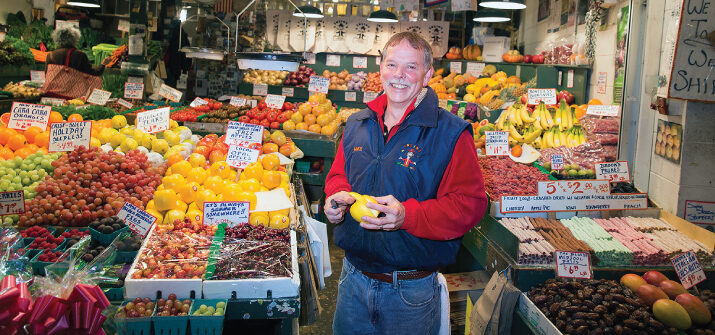From Raphael to Titian, Parmigianino to Gentileschi, 40 magnificent works of art from southern Italy’s largest museum arrive in Seattle this month. Flesh and Blood: Italian Masterpieces from the Capodimonte Museum opens at the Seattle Art Museum October 17 and runs through January 26, 2020.
Flesh and Blood offers a rare opportunity to see works of art created not only by Italian Renaissance and Baroque masters, but also by French and Spanish artists working in Italy at the time. The show includes 39 paintings and one sculpture, Rape of a Sabine by Giambologna.
“We jumped at the opportunity to bring this exhibit to Seattle audiences,” said Chiyo Ishikawa, SAM’s Susan Brotman Deputy Director for Art and Curator of European Painting and Sculpture. “About two years ago, MondoMostre, an Italian exhibit planning service, visited us here in Seattle and left some materials behind. When we saw this project, we were blown away.”
The proposition was further sweetened when SAM curators found they could tailor the list of artwork to curate a show that would specifically appeal to contemporary American audiences. To help bring the show to the US, SAM reached out to the Kimbell Art Museum in Fort Worth, Texas. Last November, the directors and curators of both museums traveled to Naples to work out the details.
The National Museum of Capodimonte is one of Italy’s largest museums with an impressive but under-visited collection. Built as a hunting lodge by Charles III, King of the Two Sicilies (Naples and Sicily), it was used to house the extensive Farnese collection after Charles inherited it from his mother in 1735.
The collection was expanded over time and by the 18th century, the pink-and-grey palace was an essential stop on the Grand Tour for young aristocrats. In 1861, after Italian unification, the palace was owned by the house of Savoia, and in 1920, it was donated to the Italian state. Its extensive gardens and woods, which overlook the city and bay of Naples and cover more than 330 acres, were recognized in 2014 as Italy’s most beautiful park, cited for their historical, architectural and botanical heritage.
Most of the paintings on display at SAM feature portraits drawn from mythology or religion. The themes are dramatic and the lighting, theatrical. “The canvases are huge,” said Ishikawa. “When you see them in person, their size is intimidating. Many were painted to be altar pieces, so they were designed to be large and hang over the viewer. The figures are life-sized which means you can experience them on a more physical level.”
Flesh and Blood explores the intersection of physical and spiritual existence with an emphasis on the human body – whether it’s expressing love, depicting violence, representing suffering or portraying physical labor. “It’s a tough show,” said Ishikawa, “and the art does not shrink from the theme. There is graphic violence on display but there is also great spirituality and tenderness. You cannot help but see how contemporary these paintings are. I was struck by how great artists who address human themes can remain so current even centuries later.”
One example of that is Judith Beheading Holofernes by Artemisia Gentileschi. One of the most celebrated female artists of the Baroque period, Gentileschi was known for her dramatic scenes featuring women from the Bible or mythology. In the painting on view, Gentileschi depicts the story of the Jewish heroine Judith caught in the act of slaying the general Holofernes who was threatening to destroy her village. Two strong young women are holding down the general, focused on their grisly task, their sleeves rolled up and the general’s blood running red over the white sheets.
“This is an unflinching portrait of a woman taking revenge on a man who threatened her,” said Ishikawa. “It’s a horrifying painting. You can almost feel the physical force it would take to behead someone. It’s not surprising that this image has become associated with today’s #MeToo movement. The murder is seen as a righteous response to a threat.”
Another painting, Massimo Stanzione’s Massacre of the Innocents, depicts the Biblical story of King Herod ordering the murder of all male children in Bethlehem under the age of two in an attempt to kill the infant Jesus. “This painting shows you the mothers’ anguish as they try to protect their children,” said Ishikawa. “You can almost feel the tension in their upraised hands. It’s easy to draw parallels between these mothers and parents today at the Mexican border who are separated from their children.”
A total of 24 Italian artists are presented in Flesh and Blood with works displayed chronologically from the 16th through the 18th centuries. In addition to Gentileschi and Stanzione, SAM visitors will also find artwork by Raphael, Parmigianino, Titian, Annibale Carracci, Bernardo Cavallino and Guido Reni, among others. Photos of the works and essays are available in the companion 160-page exhibit catalog.
Seattle residents and visitors can take advantage of an ongoing array of public programs, docent tours, art workshops and more offered throughout the exhibition run. A free community celebration will be held on October 17 from 5 p.m. to 9 p.m. that features live music, performances and art-making projects. More information at www.seattleartmuseum.org.
Da Raffaello a Tiziano, dal Parmigianino a Gentileschi, 40 magnifiche opere d’arte dal più grande museo del sud Italia arrivano a Seattle questo mese. “Flesh and Blood: Italian Masterpieces from the Capodimonte Museum/Carne e sangue: Capolavori italiani dal Museo di Capodimonte” apre al Seattle Art Museum il 17 ottobre e durerà fino al 26 gennaio 2020.
“Flesh and Blood” offre la rara opportunità di vedere opere d’arte realizzate non solo da maestri italiani del Rinascimento e del Barocco, ma anche da artisti francesi e spagnoli che all’epoca lavoravano in Italia. La mostra comprende 39 dipinti e una scultura, il Ratto della Sabina del Giambologna.
“Abbiamo colto l’opportunità di offrire questa mostra al pubblico di Seattle”, ha detto Chiyo Ishikawa, vicedirettore per l’arte e curatore della pittura e della scultura europea del SAM Susan Brotman. “Circa due anni fa MondoMostre, servizio italiano di progettazione di mostre, ci ha fatto visita qui a Seattle e ha lasciato un po’ di materiale. Quando abbiamo visto questo progetto, siamo rimasti sbalorditi”.
La proposta è stata ulteriormente migliorata quando i curatori del SAM hanno scoperto di poter personalizzare l’elenco delle opere d’arte per offrire una mostra che si rivolgesse specificamente al pubblico americano contemporaneo. Per aiutare a portare la mostra negli Stati Uniti, il SAM ha contattato il Kimbell Art Museum di Fort Worth, Texas. Lo scorso novembre, i direttori e i curatori di entrambi i musei si sono recati a Napoli per definire i dettagli.
Il Museo Nazionale di Capodimonte è uno dei più grandi musei italiani con una collezione impressionante ma poco visitata. Costruito come residenza di caccia da Carlo III, re delle Due Sicilie (Napoli e Sicilia), fu utilizzato per ospitare la vasta collezione Farnese dopo che Carlo la ereditò dalla madre nel 1735.
La collezione fu ampliata nel corso del tempo e nel XVIII secolo il palazzo rosa e grigio fu una tappa essenziale del Grand Tour per i giovani aristocratici. Nel 1861, dopo l’unità d’Italia, il palazzo divenne proprietà della casa Savoia e nel 1920 fu donato allo Stato italiano. I suoi ampi giardini e boschi, che si affacciano sulla città e sul golfo di Napoli e coprono oltre 330 ettari, sono stati riconosciuti nel 2014 come il parco più bello d’Italia, e citati per il loro patrimonio storico, architettonico e botanico.
La maggior parte dei dipinti esposti al SAM presentano ritratti tratti dalla mitologia o dalla religione. I temi sono drammatici e l’illuminazione è teatrale. “Le tele sono enormi”, ha detto Ishikawa. “Quando le vedi di persona, le loro dimensioni sono intimidatorie. Molte sono state dipinte per essere pale d’altare, quindi sono state progettate per essere grandi e appese sopra lo spettatore. Le figure sono a grandezza naturale, il che significa che puoi sperimentarle ad un livello più fisico”.
“Flesh and Blood” esplora l’intersezione dell’esistenza fisica e spirituale con un’enfasi sul corpo umano – sia che si tratti di esprimere amore, raffigurare la violenza, rappresentare la sofferenza o mostrare il lavoro fisico. “È uno spettacolo difficile”, ha detto Ishikawa, “e l’arte non si sottrae al tema. C’è violenza grafica in mostra, ma c’è anche grande spiritualità e tenerezza. Non si può fare a meno di vedere come sono contemporanei questi dipinti. Mi ha colpito come i grandi artisti che affrontano temi umani possano rimanere così attuali anche secoli dopo”.
Un esempio è Giuditta che decapita Oloferne di Artemisia Gentileschi. Una delle artiste più celebri del periodo barocco, Gentileschi era nota per le sue scene drammatiche con donne della Bibbia o della mitologia. Nel dipinto in mostra, Gentileschi raffigura la storia dell’eroina ebrea Giuditta colta nell’atto di uccidere il generale Oloferne che minacciava di distruggere il suo villaggio. Due giovani e forti donne stanno tenendo verso il basso il generale, concentrate sul loro macabro compito, con le maniche arrotolate e il sangue del generale che scorre rosso sui fogli bianchi.
“Questo è il ritratto inflessibile di una donna che si vendica di un uomo che l’ha minacciata”, ha detto Ishikawa. “È un quadro orribile. Si può quasi sentire la forza fisica che ci vuole per decapitare qualcuno. Non sorprende che questa immagine sia stata associata al movimento #MeToo di oggi. L’omicidio è visto come una giusta risposta a una minaccia”.
Un altro quadro, il Massacro degli innocenti di Massimo Stanzione, raffigura la storia biblica del re Erode che ordina l’assassinio di tutti i bambini maschi di Betlemme sotto i due anni nel tentativo di uccidere Gesù bambino. “Questo dipinto mostra l’angoscia delle madri che cercano di proteggere i loro figli”, ha detto Ishikawa. “Si può quasi sentire la tensione nelle loro mani alzate. È facile tracciare paralleli tra queste madri e i genitori che oggi, al confine con il Messico, sono separati dai propri figli”.
Un totale di 24 artisti italiani sono presentati in “Flesh and Blood” con opere esposte cronologicamente dal XVI al XVIII secolo. Oltre a Gentileschi e Stanzione, i visitatori del SAM troveranno tra gli altri anche opere di Raffaello, Parmigianino, Tiziano, Annibale Carracci, Bernardo Cavallino e Guido Reni. Le foto delle opere e i saggi sono disponibili nel catalogo della mostra di 160 pagine.
I residenti e i visitatori di Seattle potranno usufruire di una serie di programmi pubblici, visite di docenti, laboratori d’arte e molto altro ancora durante il percorso espositivo. Il 17 ottobre, dalle 17.00 alle 21.00, si terrà una festa gratuita per la comunità con musica dal vivo, performance e progetti artistici. Maggiori informazioni su www.seattleartmuseum.org.































